At the cemetery in the village of Malaya Serdoba, Penza Oblast, stands a modest monument: a cross with the inscription “Here lies the dust of those who died of hunger in the USSR.” From 1930 to 1934, every fourth person in the village died, and the bodies were buried in mass graves.
The cross was erected in 1992 at the initiative of the son of a repressed teacher, Mikhail Dolgov, and it is the only monument in Russia to the victims of the artificial famine caused by Stalin’s policy of collectivization. The number of victims of the Holodomor is estimated at 9.4 million people. Four million died in Ukraine, 2.5 million in Russia, 1.5 million in Kazakhstan, and 1.5 million in Belarus.
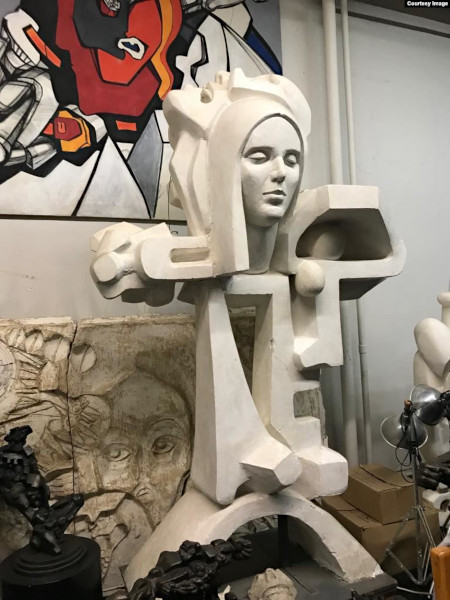
American writer Kathleen Witkowski-Tarr has visited Russia 12 times. She is interested in the life of peasants under Soviet rule, the famine, and the repressions. On her trips, she was accompanied by the film crew of the documentary “The Great Lie.” New York-based director Igor Runov became interested in the role the United States played in the tragic events of the early 1930s. At that time, America, stricken by the Great Depression, sold Stalin equipment for factories and received money earned from the sale of grain seized from Soviet peasants. The West did not know that peasants were dying in the USSR. The Moscow correspondent for “The New York Times,” Walter Duranty, a Pulitzer Prize winner, secretly worked for Stalin and used his influence to discredit reports that a catastrophe of such magnitude was occurring. In particular, thanks in large part to these reports, US President Roosevelt, by his own admission, moved to establish diplomatic relations with the USSR. In February 2019, the film “Mr. Jones” premiered, telling the story of the conflict between Duranty and the British journalist Gareth Jones, who witnessed the Holodomor.
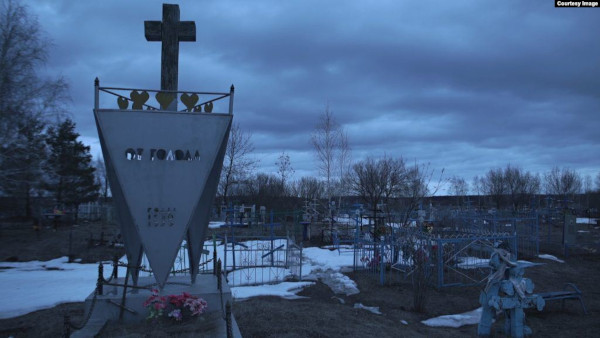
“The strategy of the ‘Big Lie’ was formulated by Hitler in ‘Mein Kampf,’ but it was first put into practice by Stalin to conceal the consequences of the monstrous man-made famine in the Soviet in the early 1930s. The main character of the film ‘The Great Lie’ travels to modern-day Russia. Traveling across the country, she meets the last surviving witnesses of the Holodomor. Over time, she realizes that the war the Bolsheviks started against their own peasantry a hundred years ago is not yet over. The dual role played by the American media and business in the early 1930s in Soviet Russia becomes obvious to her. But even more surprising to her is the connection between those distant events and the atmosphere of total distrust and deceit that has become commonplace in our ‘post-truth world,’” say the creators of the film “The Great Lie.”
Director Igor Runov worked in foreign trade and the Ministry of Foreign Affairs in Soviet times, leaving public service in 1991. He then worked for various international organizations and graduated from the New York Film Academy. “The Great Lie,” his third documentary film, will be shown at several festivals in 2019. The director wants to use the proceeds from its distribution to build a monument to the victims of the Holodomor in Russia. Anna Graham, the widow of sculptor Ernst Neizvestny, has given her consent to use one of his conceived but unfinished works for this purpose.
Igor Runov spoke to Radio Liberty about his film “The Great Lie.”
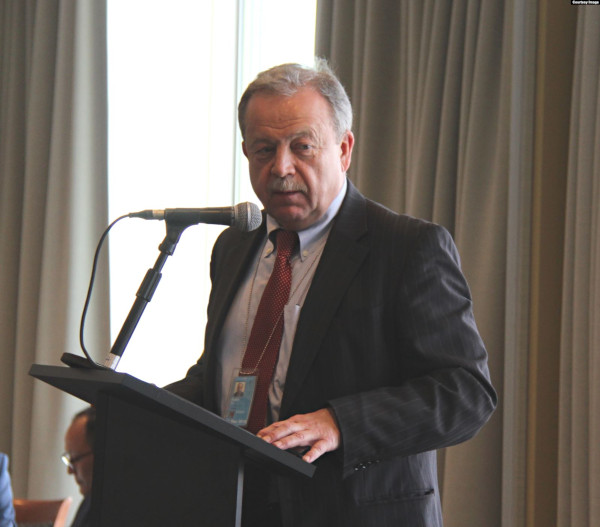
—Why did you decide to raise funds for a monument, and how did you reach an agreement with Ernst Neizvestny’s heirs?
—The idea came up as the film was being completed, late last year. To my surprise, I learned that to date, fourteen memorials dedicated to the victims of the Great Famine of the 1930s have been created in eleven countries.
—Even in Australia!
—Even in Australia, can you imagine? There is a monument on Sardinia. Yet in Russia, there is still not a single memorial to the victims of the Holodomor. The issue itself has become a hostage of complex political relations with Ukraine. Although back in 2003, the 58th session of the UN General Assembly unanimously adopted a joint statement on this issue, including Russia and Ukraine. And if we are to divide the dead by nationality, then out of 10 million, about three million were Russians. And it is unknown how many Russians died in Ukraine, Kazakhstan, or Belarus. Incidentally, all these countries honor the memory of the dead and have created appropriate memorials. That’s why the idea arose to such a monument in Russia, to draw people’s attention to this tragic page of Russian history. I turned to Anna Graham, the widow of the famous sculptor Ernst Neizvestny—the author of many memorials to the victims of political repression in the USSR. To my joy, she immediately agreed to provide for this purpose one of the existing plaster models that remained unrealized and which, emotionally and stylistically, is very fitting for this theme.
—And where in Russia should the monument be placed?
—I think, sooner or later, memorials to the victims of the Holodomor should be erected in all the regions that suffered from “accelerated” collectivization in those years. In particular, in Krasnodar, Stavropol, Rostov, the Volga region, and other areas. I am convinced that those who died from the famine of the 1930s should be equated with victims of political repression. I hope that the idea of creating such a memorial will find support in Russia—including through our film—from the populations of these regions and public organizations.
—You write that you owe the idea for the film to Alexander Nikolaevich Yakovlev…
—Yes, we discussed this topic with him in the late 90s, when the “Democracy” Foundation, which he headed, published declassified archives on the curtailment of the “New Economic Policy (NEP).” I had met him long before that, as he had interned in America with my father at the tail end of the Khrushchev Thaw. We communicated more closely in the late 1970s, when he was the USSR’s ambassador to Canada, and I was preparing my PhD dissertation on Canada-US relations. After his death, in 2011, the Foundation published a three-volume work, “Famine in the USSR,” which presented documentary evidence of the scale of this tragedy and how it was organized by Stalin and his team.
—During filming, did you often meet people who remember the famine?
—Two of my characters talk about their personal memories of the events of those years. But given that we are talking about events from 1931–33, it is clear that such witnesses are becoming fewer and fewer. This was one of the main reasons we hurried with the filming.
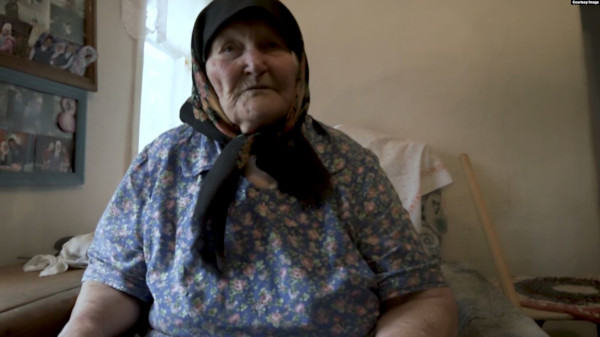
—The film states that the war against the peasantry, started by the Bolsheviks a hundred years ago, is not yet over. How is this war being waged today?
—I recently read the memoirs of A. N. Yakovlev, which include a letter he wrote in 2001 to President V. V. Putin. In it, he warned of the danger of relying entirely on industrial, forced methods of increasing agricultural production at the expense of the peasantry and small producers. Unfortunately, all his predictions are coming true today. Currently, 90% of all state loans are received by two dozen of the largest agro-industrial family holdings. In these conditions, there is almost no money left to support small producers. And here it is appropriate to recall the famous Stolypin reforms of the early 20th century, which completed the half-century-long emancipation of the peasants from serfdom. They were based on the guaranteed provision of cheap loans to small producers for the purchase of agricultural equipment and the guaranteed purchase of their products. As a result, in just five years, life in the countryside revived, and Russia became a leader in the production of basic agricultural products. Today, the main problem is that behind the Bolshevik slogans of increasing industrial agricultural production, the peasants, who are deprived of the opportunity to work the land, are left outside the state’s attention. Supporters of this approach often point to the experience of the USA and Europe. But there, these processes took decades. Moreover, the lion’s share of state spending was allocated to support and provide employment for precisely those small producers who are completely forgotten in Russia today. To be convinced of this, it is enough to travel beyond the Moscow region.
—The intention of Stalin, who started the war against the peasantry, was understandable. But what does the current government want from the peasants?
—If Stalin needed to feed the growing proletariat for class interests, now it is about keeping the residents of cities and megacities—the main electorate—satisfied. And although Russia is not getting loans due to sanctions—just like in the early 1930s—for now, revenues from oil and gas are sufficient to pay for imported “expensive” food. And “cheap” food can be provided by those very agro-industrial complexes. Thus, to answer your question, the current government needs nothing from the peasants. Just as the peasants themselves are not needed.
—You filmed in the Pskov, Arkhangelsk, and Penza regions. Is the devastation of rural areas shocking?
—It’s not even about devastation. Entire villages are literally burning down—often along with their remaining helpless inhabitants. This happens especially often in the spring, when, according to tradition, controlled burns—`pal`—are carried out to burn last year’s grass. Arkhip, a young man from the Pskov province, once one of the richest in northern Russia, talks about this.
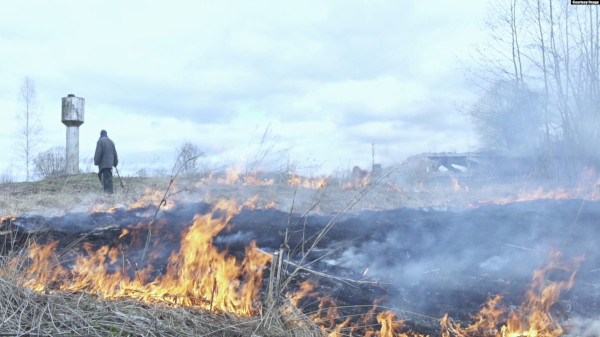
The symbolism of fire in the film is not accidental. The word “holocaust” in Webster’s dictionary is interpreted as the mass extermination of people. But there is another, original meaning of this word. Translated from ancient Greek, it means a burnt offering, an “offering to the gods by burning it” on an altar.
Not everything made it into the film; there were purely Kafkaesque scenes. I remember a “haunted house” on the territory of a dilapidated noble estate in the Pskov region. When I began to inquire, they explained that about two dozen homeless people live there. They are nocturnal creatures, rarely seen, as they only come out at night—to stretch, get food…
—The film has a wonderful monologue from a 94-year-old woman who says that the Germans prayed in the church, didn’t touch a single brick, but our own people came and dismantled the church. And she concludes at the end that if there’s a war now, our own people will kill each other.
—True, I also love this monologue from Baba Katya—as everyone in the village called her—suffered through and paid for with her entire life. To our great regret, she died shortly after filming. In the film, she reflects not only on religion but also on the denunciations and betrayals characteristic of that time. Baba Katya was not familiar with the poetry of Bella Akhmadulina, but she was very familiar with the “mysterious passion for betrayal” of the homo sovieticus. These lines, as you may remember, served as the title of Vasily Aksyonov’s last autobiographical novel.
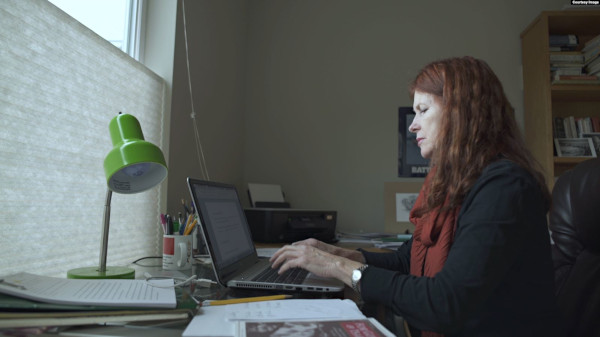
—How did you meet your main character, the writer Kathy Witkowski-Tarr?
—I met Kathy in the early 90s. A journalist by training, Kathy was then the vice president of the Alaska Chamber of Commerce, and we were preparing the first “landing” of American business in the Soviet Far East. She later returned to her main profession and decided to write a book about Russia. When I learned about this, I thought it would be interesting to combine these two themes—Stalin’s repressions, the Holodomor, and how Stalin managed to fool the whole world, including America, to hide this crime. And Alaska could serve as an interesting starting point for such an analysis. After all, the decision to sell it to America was dictated not only by political reasons but also by the need to attract capital for Russia’s industrial development. The money from the sale went to building railways. Seventy years later, Stalin solved the problem of accelerated industrialization in a more familiar, cannibalistic way for him. He spent the grain taken from the peasants to purchase one and a half thousand industrial enterprises from America. In 2008, the Duma passed a resolution stating that to this day these factories can serve as a kind of monument to the victims of the Holodomor.
—A rather cynical remark.

—Yes, in this respect, we in the USSR had a good schooling. But what struck me was that the first to pick up Stalin’s “Great Lie” was the American newspaper “The New York Times” and its Moscow correspondent, Walter Duranty, who declared the leaked information about the famine to be “malicious slander” against Stalin and his strategic genius. Equally naive today are the arguments that this was supposedly an “inevitable price” for the victory in the Great Patriotic War, for the “shield of the motherland” forged in those years. What kind of “shield” is it that did not protect the lives of the 42 million Soviet citizens who died in that war? These figures were announced from the rostrum of the Duma two years ago. That’s 15 million more people than we were led to believe for the last 40 years.
—Your protagonist is surprised by the indifference with which Russian society accepts this “Great Lie.” You were born in the Soviet , so you are probably not very surprised by it.
—It is impossible to get used to this, although the methods of fighting the truth are becoming more and more sophisticated. The “Great Lie” launched by Stalin in the 1930s led to the emergence of a “Post-Truth World.” And on this ground, the leaders of Russia and America seem to have found a common language. As for the latest data on war losses, only two Russian intellectuals, writers, could not remain silent—Viktor Yerofeyev and Daniil Granin. In one of his last articles, Granin, a war veteran, wrote: “What is 42 million dead? It is not a number. It is loneliness.” And next to the “Immortal Regiment,” I would propose creating a “Forgotten Regiment,” enlisting the 15 million people unjustly forgotten and erased from the state’s memory.
—Now no one believes anything anymore. The avalanche of contradictory information about Soviet history gives rise to all sorts of myths, and the number of Stalin’s admirers is growing. It has reached 70%, if you believe the latest Levada Center poll.
—According to the same polls, more than half of today’s twenty-year-olds know nothing about Stalin’s repressions. Plus the stream of the “Great Lie,” the mythologizing of the Soviet past… This makes the need for truthful films and books about that time all the more acute. Among such works is the recently released and Oscar-shortlisted film by Marianna Yarovskaya, “Women of the Gulag” (she was an executive producer on our film). A few days ago, Yury Dud’s film “Kolyma—Birthplace of Our Fear” caused an unprecedented resonance on the Internet, gaining more than 4 million views on YouTube in a few days. So, not all is lost yet. And I hope the time is not far off when busts of Stalin—like the one I recently bought at the Duty Free shop in Moscow’s Vnukovo airport—will disappear from shop windows and shelves. I remember thinking then: what if someone tried to sell a bust of Hitler at a Berlin airport?
—Go into a bookstore in Moscow, and you will find hundreds of books dedicated to justifying Stalin and full of delusional fabrications: that there was no Katyn, that there were no repressions…
—Today’s situation reminds me of Germany in the 1970s and 80s, when post-war denazification clashed with a pseudo-patriotic wave. The final turning point came in the 1980s as a result of a public discussion that came to be known as the “Historians’ Debate.” It is noteworthy that it was sparked by the television series “Holocaust” starring Meryl Streep. Despite the differences in situation and historical context, I think that Russian society will have to go through a similar path. It should end with the final legislative condemnation of Stalin and communist ideology, and with society’s acceptance of responsibility for everything that happened to the country in the 20th century.
—There is the experience of Ukraine, where after the “Revolution of Dignity,” the Communist Party was banned, Soviet and Nazi symbols were equated, monuments to Lenin were toppled, and archives of the special services were opened, including those concerning what happened during the Holodomor.
—Absolutely. Without these steps towards freedom of thought and liberation from fear, it is impossible to move forward. And no new great lie “for salvation” should serve as an obstacle here. The memory of the victims of the Stalinist regime and the communist utopia demands this of us. The ashes of the millions who perished in the fire of the Holodomor knock at the hearts of the living.
Published on the Radio Liberty website 26.04.2019